Evening in the City of London
David Bomberg
1944
Image
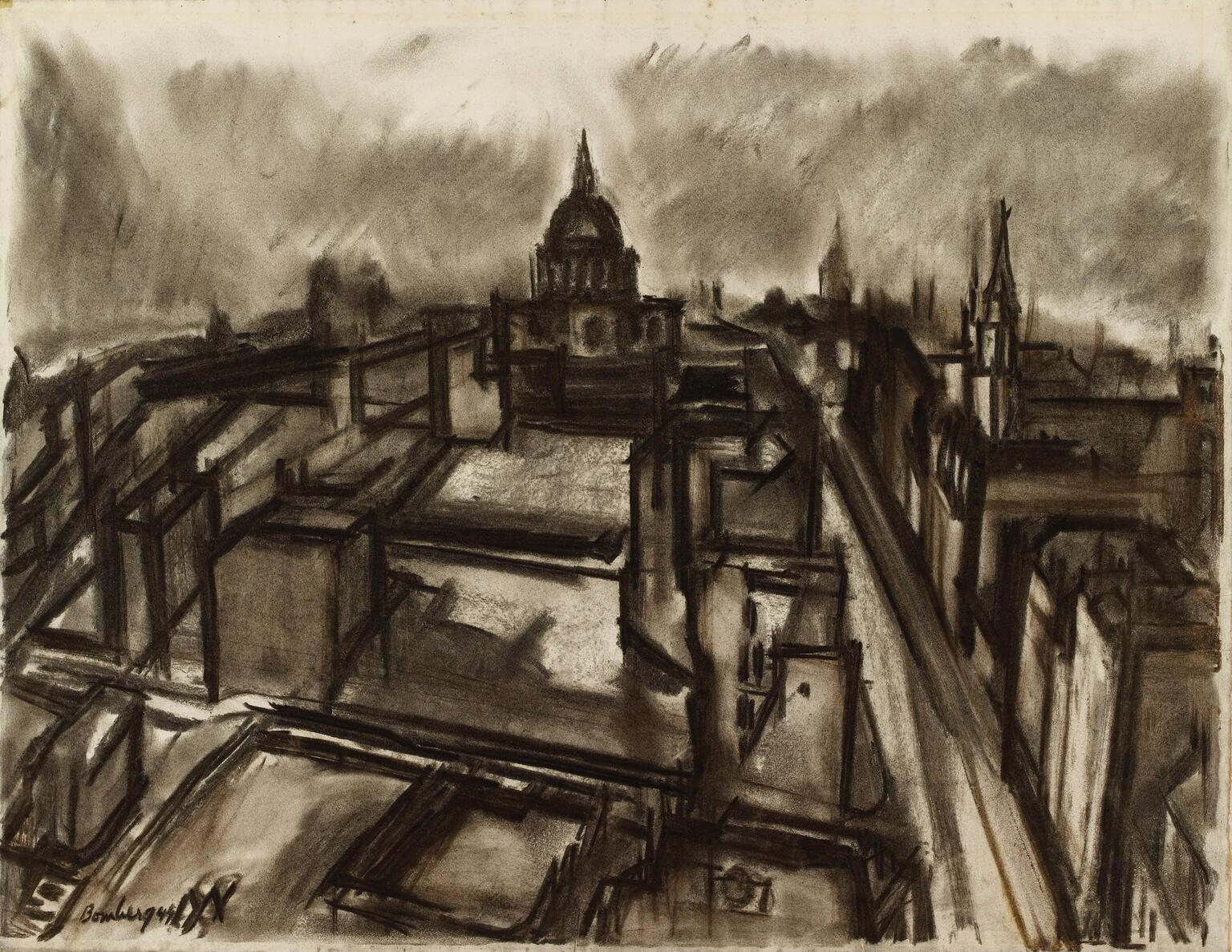
Engage with this Source
Related Guide
Visual and Material Culture in the Mid-Twentieth Century
1939–1973
Jewish visual art flourished and diversified in the postwar period, reflecting the social and political transformations taking place in the world.
Creator Bio
David Bomberg
1890–1957
The painter David Bomberg was one of the “Whitechapel Boys,” the cohort of British Jewish writers and painters who emerged from the immigrant quarter of East London in the early twentieth century. He studied at the Slade School of Fine Art from 1911 to 1913 but was expelled for the radicalism of his style, which was influenced by Italian futurism and cubism. After the war, his style changed, and he began to focus on landscapes. From 1923 to 1927, he painted and sketched in Mandate Palestine with the financial support of the Zionist movement. He is considered one of the great painters of twentieth-century Britain.
You may also like
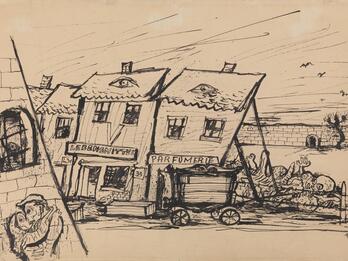
Façades for the International Commission
In the Terezin concentration camp, before a visit by the International Red Cross and the Danish Red Cross in 1944, the Nazis created an elaborate ruse, designed to convince the delegation that the…
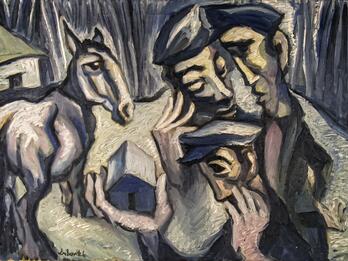
Untitled—Three Men and a Horse in the Shtetl
Though he was born and lived all his life in North America, Norman Leibovitch’s oeuvre included not only depictions of the Montreal neighborhood where he grew up and Canadian landscapes, but many…
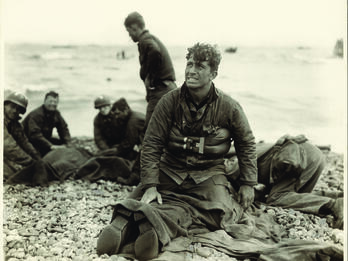
D Day Rescue, Omaha Beach, France. June 6, 1944
Though this photograph of Second Lieutenant Walter Sidlowski with the body of a soldier killed during the Allied assault on Omaha Beach has gone down in history as a photograph of D-Day, it was…
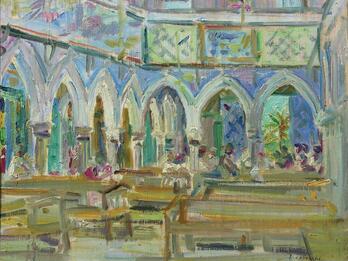
La Ghriba Djerba, Tunisia
Jules Lellouche painted the interior of this synagogue in Djerba during World War II, when Tunisia was ruled by Vichy France. Though Tunisia’s Jewish community escaped mass deportations and murder in…
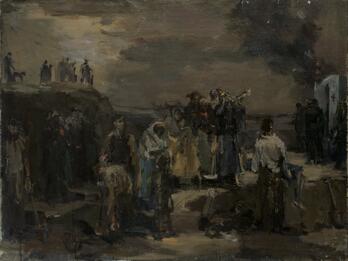
Untitled, Execution: Babi Yar series. Nizhny Tagil or Leningrad
Felix Lembersky’s three Babi Yar paintings were among the first artistic representations of the Nazi massacre in Kyiv, when, over the course of two days in September 1941, over 33,000 Jews were…
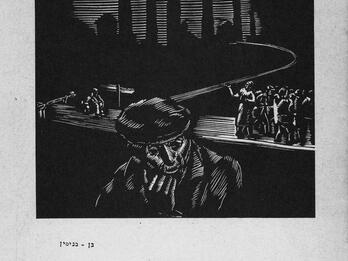
Home! Home?
After surviving the war, Miklós Adler returned to his hometown of Debrecen and created sixteen woodcuts, signing them Ben Binyamin (“son of Benjamin”) in honor of his father. In this woodcut…

